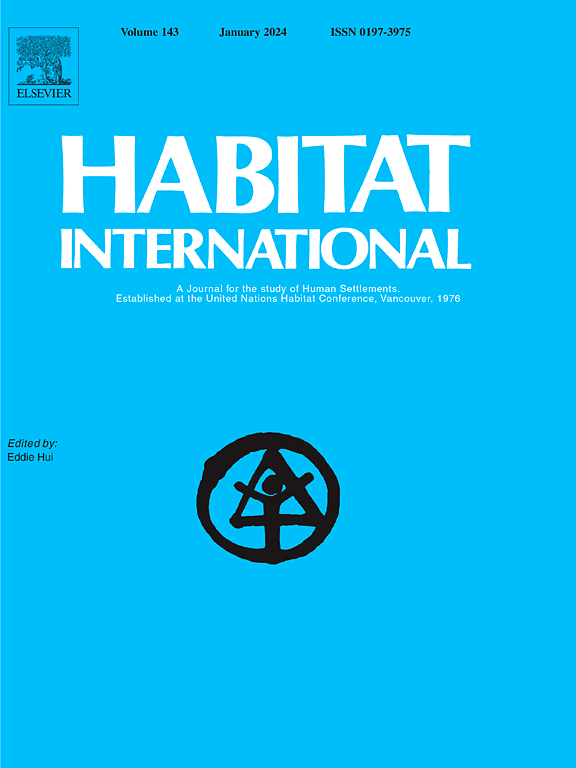How do planning intentions spatiotemporally drive 3-D urban growth?
IF 6.5
1区 经济学
Q1 DEVELOPMENT STUDIES
引用次数: 0
Abstract
Spatial planning is conducive to guiding urban growth to efficiently achieve urban sustainability. However, assessing the causal effects of planning practices on three-dimensional (3-D) urban growth at the local level is empirically challenging. In this study, Austin, Texas was selected to evaluate the causal effects of plans on the 3-D urban growth, measured by impervious surface fraction, building surface fraction, and building height. The propensity score matching method was applied to construct an artificial control group of land use pixels and subsequently evaluate the effects of the two planning intentions, i.e., planned development centers and planned protected areas, on the 3-D urban growth respectively over two plan periods. Results show that the growth rates of three urban morphology components were significantly lower in the second period. The causal effect analysis provides empirical evidence of the success of spatial planning practice in guiding urban growth to the centers and away from parks and open space during the second plan period. The study proved that detailed 3-D urban dynamic monitoring and propensity score matching ultimately helps to understand how planning intentions affect different aspects of urban growth, which further contributes to a deeper understanding of spatial heterogeneity in complex urbanization processes.
规划意图如何在时空上推动三维城市发展?
空间规划有利于引导城市增长,有效实现城市可持续发展。然而,在地方层面评估规划实践对三维(3-D)城市增长的因果效应在经验上具有挑战性。本研究选择德克萨斯州奥斯汀市,通过不透水地表比例、建筑表面比例和建筑高度来评估规划对三维城市增长的因果效应。采用倾向得分匹配方法构建土地利用像元的人工控制组,分别评价规划开发中心和规划保护区两种规划意向对两个规划期城市三维增长的影响。结果表明,第二阶段城市形态的3个组成部分的增长率均显著降低。因果关系分析为空间规划实践在二次规划期间引导城市向中心发展、远离公园和开放空间提供了成功的经验证据。研究证明,详细的三维城市动态监测和倾向得分匹配最终有助于了解规划意图如何影响城市增长的不同方面,从而进一步有助于深入了解复杂城市化过程中的空间异质性。
本文章由计算机程序翻译,如有差异,请以英文原文为准。
求助全文
约1分钟内获得全文
求助全文
来源期刊

Habitat International
Multiple-
CiteScore
10.50
自引率
10.30%
发文量
151
审稿时长
38 days
期刊介绍:
Habitat International is dedicated to the study of urban and rural human settlements: their planning, design, production and management. Its main focus is on urbanisation in its broadest sense in the developing world. However, increasingly the interrelationships and linkages between cities and towns in the developing and developed worlds are becoming apparent and solutions to the problems that result are urgently required. The economic, social, technological and political systems of the world are intertwined and changes in one region almost always affect other regions.
 求助内容:
求助内容: 应助结果提醒方式:
应助结果提醒方式:


